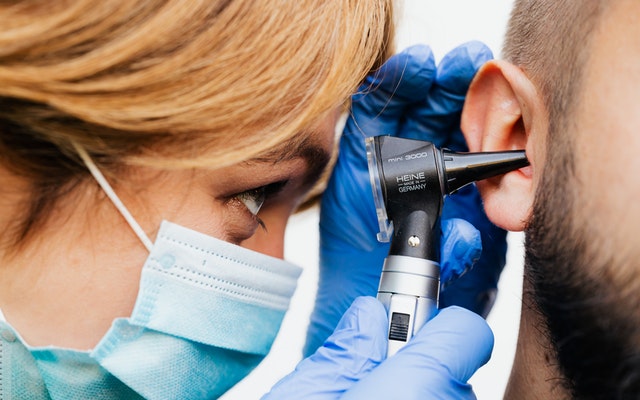
Do Hearing Aids Help Tinnitus?
Tinnitus
Tinnitus is a condition referred to as ringing of the ears. It is quite prevalent, with more than 80% experiencing it at least once in their lifetime. According to the American Tinnitus Association, the condition affects more than 50 million American citizens. While tinnitus usually self-resolves, some cases may be severe, thus requiring medical attention. Following the American Hearing Loss Association, 90 % of tinnitus conditions associated with hearing loss. The sounds associated with this condition include buzzing, hissing, humming, roaring, whistling, clicking, and grinding.
The Causes of Tinnitus
The discomfort is a result of several factors. The most common causes include;
- Acoustic trauma
- Excess wax in the ears
- Old age-related hearing complications
- Damage due to repeated exposure to loud noise
- Middle-ear infection
- Vertigo
- Hormonal changes
The Categories of Tinnitus
Typically, there are four types of tinnitus.
Neurological Tinnitus
It is caused by a complication that affects the nervous system, particularly the brain. A perfect example is Meniere’s disease.
Somatic Tinnitus
This is a rare condition associated with somatic disorders. It is a consequence of abnormalities related to touch and physical movement.
Objective Tinnitus
Objective tinnitus is caused by a specific source, such as sound. It is the rarest condition and the only one that is audible to observers. According to the National Organization for Rare Disorders, this is the only type of tinnitus with a high potential for a permanent fix.
Subjective Tinnitus
Subjective tinnitus is the most prevalent commonly caused by repeated exposure to loud noise.
Treatments for Tinnitus
Unfortunately, there is no cure for tinnitus. However, there are several ways to manage the ailment. They include;
- Masking gadgets
- Hearing aids
- Antidepressants
- Behavioural therapy
- Exercising
- Earwax removal
- Treating an underlying medical condition
Do Hearing Aids Help with Tinnitus?
Hearing aids are impeccable solutions for individuals whose conditions are caused by exposure to loud noise and old age-related hearing complications. The devices operate through masking tinnitus and amplifying external sound. Through listening to different external sounds, you shift your focus away from the phantom ringing. The modern hearing aids have in-built sound therapy that adjusts according to the specific needs of an individual. Therefore, you will require a hearing evaluation done by an audiologist.
How do Hearing Aids Work
Boosts Communication
One effect of tinnitus is disrupted communication. The constant ringing interrupts conversations with other people and the environment at large. Some individuals can manage daily tasks despite having tinnitus but for most, it shifts concentration from essential functions like reading, writing, watching television or listening to a speech. In conjunction with that, the condition makes it difficult to communicate our emotional states. Most people that have tinnitus will show anger, frustration, worry, and depression even in circumstances that contribute to positive emotions. Hearing aids do not cure tinnitus but make the sounds that you need to hear louder than phantom ringing. This improves your speech and connection to the immediate surrounding. However, they are most effective in picking up sound within several feet. The best part is that they are equally helpful in quiet and noisy environments.
Auditory Stimulation
This is the inducing of electric signals in the nervous system. Hearing aids receive sounds through a microphone and convert them to electrical energy. The modern hearing aids have in-built systems with therapeutic sounds such as music with different filters, meditation hums, and other relaxing sounds. According to medical experts, hearing aids are among the ultimate solutions for individuals with language impairment. This is because auditory stimulation has an effect on the brain, for instance, improved information processing. The part of the brain that processes auditory information is known as the temporal lobe. It receives different sounds and frequencies, then gives them specific meanings. That said, hearing aids are medical devices that improve the functioning of the temporal lobe.
Sound Therapy
Sound therapy is an effective tool for managing not only tinnitus but also other neurological medical conditions. Most seniors that have tinnitus also have an underlying mental disorder. Health experts utilize music and other sounds as evidence-based calming agents for dysregulation and anxiety following the American Psychiatric Association. The use of hearing aids, soothing music and tranquil sounds of different frequencies help improve the symptoms of mental disorders, thus lessening the effect of tinnitus. This happens through;
- Reducing muscle tension
- Improving memory
- Better management of thoughts and emotions
- Reducing muscle tension
- Improving mood
The Types of Hearing Aids
In-the-Ear
In-the-ear hearing aids fit in the outer ear. They are custom-fit to meet the needs of every individual. For instance, they come in various sizes and colors to match the complexion of the outer ear. ITEs come in two categories: full shell and half shell. The half-shell only fits the lower part of the outer ear while the full shell fits the entire space. ITEs are ideal for individuals with mild hearing loss but are also helpful for people with severe conditions.
The Benefits of ITEs
- They are custom fit.
- ITEs are large, thereby allowing for effective amplification.
- They are discreet.
Behind-the-ear
A behind-the-ear hearing aid either rests on top of the ear or behind it. A thin tube connects this part to an earpiece that fits in the ear canal. This type is ideal for individuals with severe hearing loss but also effective for people with mild conditions. It is the largest of all hearing aids and the most preferred by individuals with tinnitus and other hearing loss complications. Due to its size, it’s the best when it comes to sound picking. There are two types of BTEs: one comes with a sound tube while the other has a receiver-in-the-year.
The Pros of BTEs
- Spectacular sound quality.
- BTEs contain rechargeable batteries.
- They allow for wireless connection to devices such as mobile phones.
- Accommodate larger batteries.
- Stronger amplification.
- It comes with additional features such as a telecoil.
In-the-Canal
This type of hearing aid is designed to fit in the ear canal. They are perfect for a range of hearing loss complications but mostly recommended for individuals with mild to moderate conditions.
The Advantages of ITCs
- They are discreet.
- ITCs are comfortable.
- They have a long battery life.
Other Types of Hearing Aids
- Low-profile hearing aids
- Open fit
Key Takeaway
Most of us will experience tinnitus at least once in a lifetime. The condition can resolve itself but in some cases, management procedures are necessary. Hearing aids are technological medical devices that mask tinnitus and amplify the sounds that one needs to hear. The most popular hearing aids are BTEs, ITEs, and ITCs. All the categories are effective, depending on the severity of one’s hearing loss complication. To make the right decision, your hearing aid medical expert will give the best professional advice.


